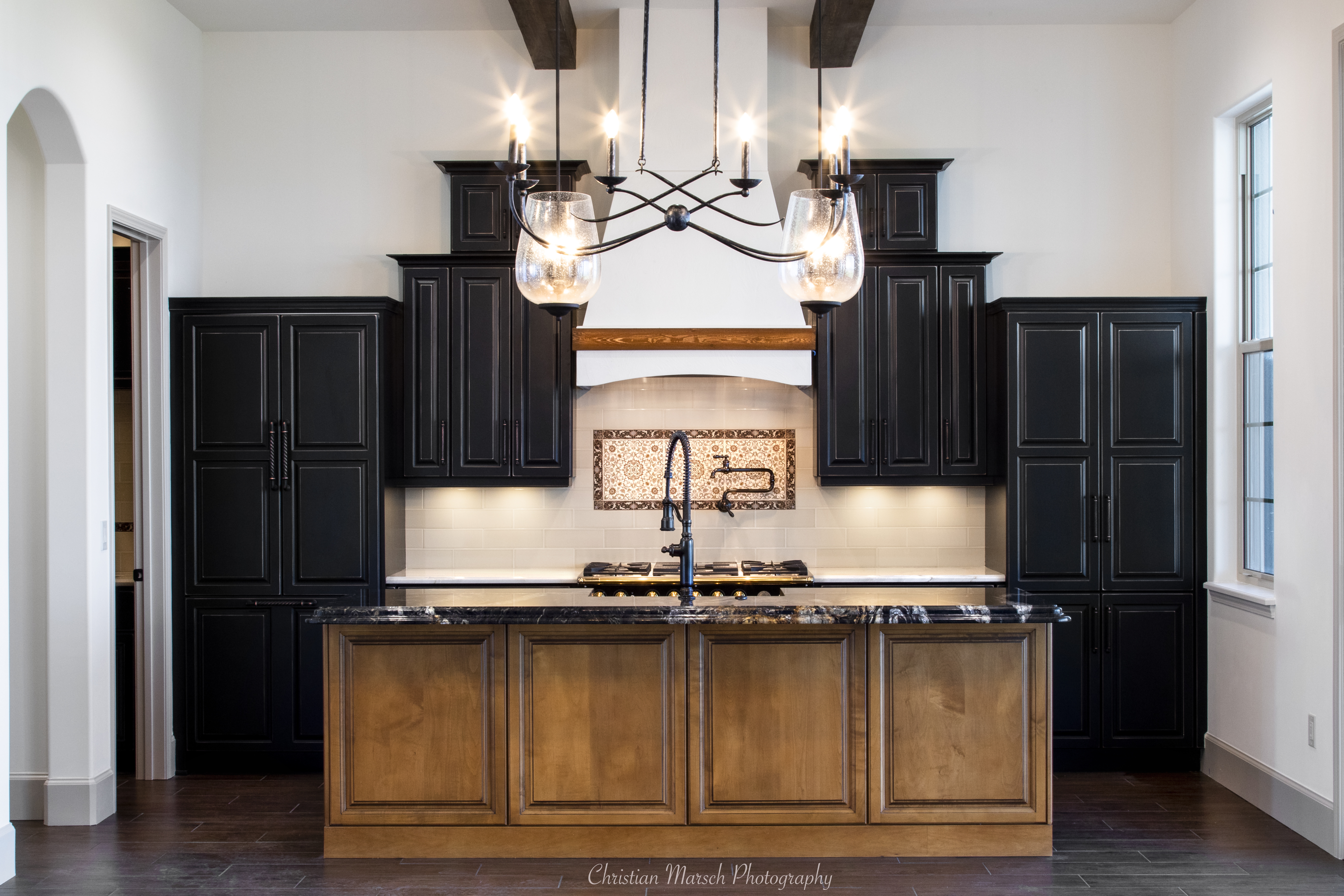Exploring what are our responsibilities to our communities as designers to create more inclusive spaces






Exigency
In a continued effort to approach life, work and continuing education in a multi-disciplinary way I try and marry my current career as a Residential Building Designer and Interior Designer and a Masters in Rhetoric and Composition. To build a monument of resources based on the rhetoric of architecture and design, I will address Race and Space, Sustainability and Stewardship, and Gender and Space. What I continually encounter is the concept of simply erasing people of a particular color, gender and class whether it is in history, composition or architecture. These groups of people are our end users, and in an effort to be better, it is time we gain a better understanding of our end users and how they read our buildings and spaces.
The purpose of this published list is to grow a knowledge base for designers to reconcile what we do with who it is for and to understand the concept of architecture and design as a form of rhetoric. When we look at a building we are “reading” it. We are articulating what the end users’ experience is. The premise is built upon the very first article listed by Darryl Hattenhauer as he states, “Communication and rhetoric are inherent aspects of architecture. Architecture uses signs to communicate its function and meaning. This communication is rhetorical when i induces it perceiver to use to understand the architecture – from a hot dog stand to a monument. Movements in architecture, such as the Gothic or International Style, promote certain values and beliefs, and can be studied as rhetorical movements. Like linguistic communication, architecture consists of codes, meaning, semantic shifts, and syntactic units.”
Ethos to architects is how they often brand their building or design style. It is how they work and where they work and design from. What they then design becomes a signifier, signaling to end users, people how to act, what to do and where to go. This in turn means that architecture communicates to us and we listen. These ideas are explored in the philosophy of architecture as well as rhetoric studies.
End users of this project would be rhetoricians interested in the relationship of visual and experience of space and architecture. For architects and designers this project could potentially close a gap between disciplines and gain an understanding of how the spaces are read and start to gain a greater understanding of what we do and how it affects how our society reacts to our designs, to be better designers.
The language o f rhetoric and design flow through and to one another seamlessly. The creative process along with the critical theory and reflection of what people create and who is listening, watching or using what has been created is a symbiotic relationship.
Architecture black and white art block printing budget of house plan building design Client Qualification coastal design Collaboration in architecture construction process contracotr fee contruction costs cost per square foot creating a furniture budget designing a house design inspriation furniture floor plan hiring a designer hiring an architect home design Home remodel project how much to build how to correctly layout furniture interior decor Interior Design interior design education interior design planning interior design process lifestyle Lighting living in a small space new fabric designs planning a home renovation planning a new home project planning a renovation Principles of design project cost purpose remodel remodeling costs saving for furniture Seating arrangement shopping for furniture small home design surf art work life balance
Rhetoric & Space
PODCAST TO CHECK OUT >>>>>>>>>>>>>>>>>>>
Darryl Hattenhauer (1984) “The rhetoric of architecture: A semiotic approach”, Communication Quarterly, 32:1, 71-77, DOI: 10.1080/01463378409369534
In this article Hattenhsuer uses the concept of semiotics as a pathway for rhetoricians to recognize and evaluate architecture. Semiotics is basically the use of signs and symbols used to communicate. Part of this premise is based on the fact that ” architects and designers elicit behavior based on the design of space.” He also explores avenues of movement and fantasy as modes of relating architecture as rhetoric.
Harries, Karsten. “Space, Place, and Ethos: Reflection on the Ethical Function of Architecture.” Artibus Et Historiae, vol. 5, no. 9, 1984, pp. 159–165. JSTOR, http://www.jstor.org/stable/1483174. Accessed 27 Apr. 2021.
This article is more of a reflective essay on our relationship to space. Harries takes that our relation to space and place is an illusion, what we often experience is more of an accidental placement more than experiencing a sense of home. She takes more of a deconstructivist attitude toward the ethos of architecture.
Fisher, Saul, “Philosophy of Architecture”, The Stanford Encyclopedia of Philosophy (Winter 2016 Edition), Edward N. Zalta (ed.), URL = <https://plato.stanford.edu/archives/win2016/entries/architecture/>.
In this online article the chapter/section about Language and Notation goes in to describing more about how Architecture acts a a language communicating rhetoric through semantics and semiotics. This article claims more that architecture does not act as a rhetorical language, it is more a piece meal type of communication.
Race & Space
PODCAST TO CHECK OUT >>>>>>>>>>>>>>>>>>>
Birmingham, Elizabeth. “Reframing the Ruins: Pruit-Igoe, Structural Racism, and African American Rhetorics as a Space for Cultural.” Western Journal of Communication. Summer 1999, Vol. 63 Issue 3, p291.
This article addresses the heart of what I want to build upon, the idea that we, white people in architecture and design, simply don’t account for a life’s experience, in particular the experience of low income Black residents in a built community that was supposed to be amazing and help them rise above. In what is typical of the building industry, money and white male decision makers derail the design intent and worth of the end user or resident. Birmingham concludes on point, “Urban housing projects like Pruitt-Igoe function as signs of structural racism because they are part of a complex social and economic system that reinforces nihilistic behaviors by physically enforcing barriers to the opportunities this society affords middle class whites.” birmingham uses the term “reading” a space to mean how we verbalize or articulate our experience in a space. I will continue using the same phrases.
Wilkins, Craig L.. The Aesthetics of Equity:Notes on Race, Space, Architecture and Music.University of Minnesota Press 2007.
Though I am just digging in to this book, it reiterates the idea that the spaces we create, people will inhabit, real people will build lives in and around these spaces. As designers we need to be cognizant of what Wilkins quotes from Rhys Isacc “space comprises the social arena in which individuals reproduce or challenge their experiential boundaries of action and interaction.” It gives us “spacial membership”. This refers to the idea that as we recognize our color we categorize what spaces we are allowed in or are comfortable in. As we read a space, we evaluate our place in it. My challenge is to create spaces that as one reads them , they read safety, equality, support, comfort and utility.
Dave Tell. Remembering Emmett Till.
I was lucky enough to find this in Audible and have been listening, driving to site visits. This book is more on race and places, yet still addresses the notion of “absent absence” that Prendergast speaks to in that partos of Emmitt Till story is constantly retold, re-historicized, rewritten and owned my those whose agendas it will serve at the time. The places are dissolved in the trial of his killers. I am not totally sure this will speak to the monument I am trying to build.
Prendergast, Catherine. “Race: The Ab sent Presence in Composition Studies.”
What I take away from the Predergast article is in the conclusion: the challenge is to “develop theorizations of race that do not reinscribe people of color as either foreign or invisible (or other), nor leave whiteness uninvestigated; …. (this is the only way to) counteract the denial of racism that is part of the … (society).
Brown, Adrienne. “Erecting the Skyscraper, Erasing Race”. Race and Modern Architecture P 203-217. University of Pittsburgh Press
Harney, Stefano & Moten, Fred. The Undercommons: Fugitive Planning and Black Study. Autonomedia, Brooklyn NY 2013
The authors speak of the “undercommons” as space that reminds me of what Foucault describes as Other. The chapter on Planning and Policy speaks to the idea of what we as designers and planners need to be cognizant of. To be considerate and inclusive of the Other and to offer respect to the Undercommons.
Gender & Space
Enoch, Jessica. Domestic Occupations: Spatial Rhetorics and Women’s Work. Southern Illinois University Press. 2019
Design & Cultural Theory
Michel Foucault. “Of Other Spaces: Utopias and Heterotopias.” Rethinking Architecture: A Reader in Cultural Theory. Edited by Neil Leach. NYC: Routledge. 1997 pp. 330-336
Karatani, Kojin. Architecture as Metaphor: Language, Number, Money. pg. 125 to 132. translated by Sobu Kohso; edited by Michael Speaks. 1995 Massachusetts Institute of Technology.
This was one of the first books I read years ago when trying to marry my English degree and love for language to the design career I find myself in now. The quote “no architect can determine a design free from the relationship with other (the client). All architects face the unknowable other. Architecture, in other words, is a form of communication, and this communication is conditioned to take place without common rules because it takes place with the other, who does not follow a commeasurable set of rules.”

Leave a comment